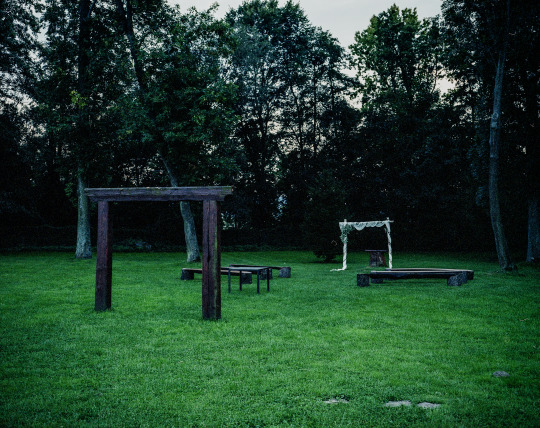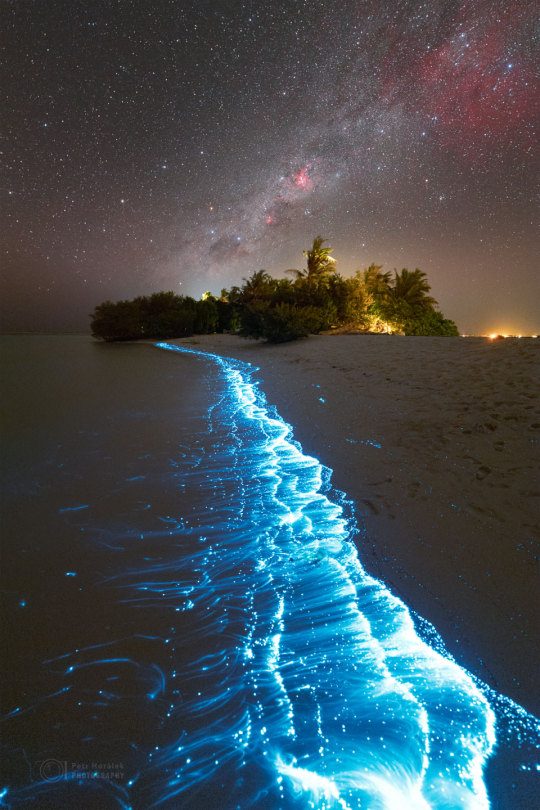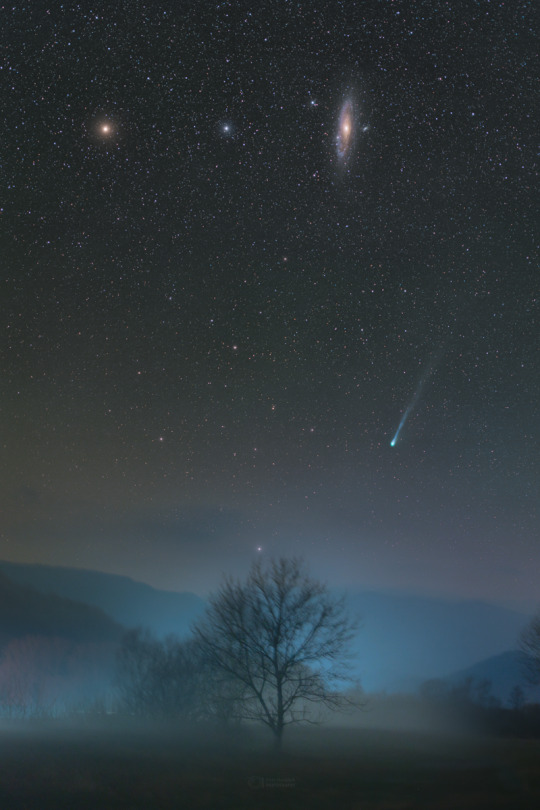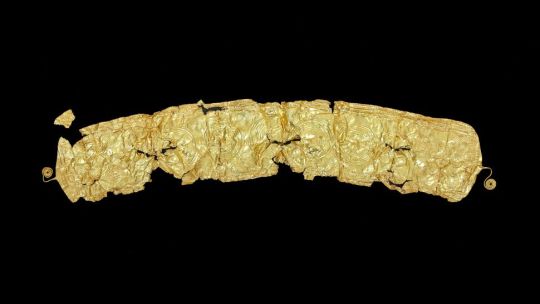#opava
Text

"Sylvester II (Gerbert d'Aurillac) et le Diable" d'Antoine Wiertz" de Martin d'Opava dans le "Chronicon Pontificum et Imperatorum" (circa 1460) présentés à la conférence “Les Vampires dans l'Art” par Marine Chaleroux - Historienne d'Art - de l'association Des Mots et Des Arts, octobre 2023.
6 notes
·
View notes
Text


TROPPAU - now OPAVA, CZECH REP.
0 notes
Photo

Born in 1981 in Opava, Czech Republic, Veronika graduated from FFA VUT Brno (MgA. in sculpture) and Palacký University Olomouc (Mgr. in Math and Art). She is a sculptress fully focused on figurative art, referring to classical sculpture and strongly influenced by pop culture. Veronika is inspired by gender themes, body aesthetics and basic human communication.
Czech artist Veronika Psotkova




#veronika psotkova#artist#art#wire sculptures#sculptures#sculptor#opava#czech republic#ffa vut brno#palacky university olomouc
0 notes
Photo

Ceremonial grounds, Opava, September 2022
And then, I went to Czechia to graduate ITF.
1 note
·
View note
Photo

Děti 6-9 let - PLNO, zapisujeme náhradníky (při velkém zájmu možnost otevření další skupiny). Do ostatních skupin pro děti i dospělé (4,5-6; 9-12; 12-14 a 14-?? let) se stále můžete přidat. Děkujeme za sdílení 🤩 #aikidoopava #aikidodojoopava #aikidoklimesova #aikidoprodospele #aikidoprodeti #aikidopromladez #aikidoprozacatecniky #opava #opavacity #opavsko #opavacz #opavaci #slezsko (v místě Aikido Dojo Opava - Vendula Klimešová) https://www.instagram.com/p/Ci2lyW-N73i/?igshid=NGJjMDIxMWI=
#aikidoopava#aikidodojoopava#aikidoklimesova#aikidoprodospele#aikidoprodeti#aikidopromladez#aikidoprozacatecniky#opava#opavacity#opavsko#opavacz#opavaci#slezsko
0 notes
Text

A Full Plankton Moon: What glows in the night? This night featured a combination of usual and unusual glows. Perhaps the most usual glow was from the Moon, a potentially familiar object. The full Moon's nearly vertical descent results from the observer being near Earth's equator. As the Moon sets, air and aerosols in Earth's atmosphere preferentially scatter out blue light, making the Sun-reflecting satellite appear reddish when near the horizon. Perhaps the most unusual glow was from the bioluminescent plankton, likely less familiar objects. These microscopic creatures glow blue, it is thought, primarily to surprise and deter predators. In this case, the glow was caused primarily by plankton-containing waves crashing onto the beach. The image was taken on Soneva Fushi Island, Maldives just over one year ago.
Credit & Copyright: Petr Horálek / Institute of Physics in Opava
Explanation
[Robert Scott Horton]
* * * *
“Those roads were echoes and footsteps,
women, men, agonies, resurrections,
days and nights,
half dreams and dreams,
every obscure instant of yesterday
and of the world’s yesterdays,
the firm sword of the Dane and the moon of the Persian,
the deeds of the dead,
shared love, words,
Emerson and snow and so many things.
Now I can forget them. I reach my center,
my algebra and my key,
my mirror.
Soon I will know who I am.”
— Jorge Luis Borges, In praise of shadow
[alive on all channels]
#Jorge Luis Borges#In praise of shadow#alive on all channels#poetry#poem#Petr Horalek#Institute of Physics in Opava#Maldives#bioluminescent
46 notes
·
View notes
Text
Astronomy Picture of the Day - Comet Pons-Brooks in Northern Spring
0 notes
Text
Silesian Sainte-Chapelle: St Thomas Becket’s Chapel, Piast Castle, Racibórz ~ Guest Post by Katarzyna Ogrodnik-Fujcik
Henry IV the Righteous in Codex Manesse. Photo courtesy of Wikimedia Commons
‘’Will no one rid me of this turbulent priest?’’
The words of King Henry II still echo ominously through the centuries and remain one of the best known in English history. The murder of Thomas Becket at the steps of his own cathedral shocked the Christian world. Henry II himself was deeply shaken. He may have not given…

View On WordPress
#Archbishop of Canterbury#Duke Henry IV the Righteous of Vratislavia#dukes of Racibórz#Henry II#King of England#medieval history#Piast Castle#Piast dynasty#Polish history#Premyslid dukes of Opava#Silesia#Thomas Becket#Thomas Bishop of Vratislavia
1 note
·
View note
Photo

85th Book I Read in 2022
Title: Fysisk Aktivitet Vid Reumatisk Sjukdom
Author: Christina H. Opava
Notes: Lite tyngre att läsa än förväntat, men ändå mycket bra info i den.
#Fysisk Aktivitet Vid Reumatisk Sjukdom#Christina H. Opava#Christina Opava#nonfiction#svenska#swedish#book#books#bookblr#reading#2022
0 notes
Photo

2024 March 11
A Full Plankton Moon
Credit & Copyright: Petr Horálek / Institute of Physics in Opava
Explanation: What glows in the night? This night featured a combination of usual and unusual glows. Perhaps the most usual glow was from the Moon, a potentially familiar object. The full Moon's nearly vertical descent results from the observer being near Earth's equator. As the Moon sets, air and aerosols in Earth's atmosphere preferentially scatter out blue light, making the Sun-reflecting satellite appear reddish when near the horizon. Perhaps the most unusual glow was from the bioluminescent plankton, likely less familiar objects. These microscopic creatures glow blue, it is thought, primarily to surprise and deter predators. In this case, the glow was caused primarily by plankton-containing waves crashing onto the beach. The image was taken on Soneva Fushi Island, Maldives just over one year ago.
∞ Source: apod.nasa.gov/apod/ap240311.html
447 notes
·
View notes
Text
What glows there? The answer depends: sea or sky? In the sea, the unusual blue glow is bioluminescence. Specifically, the glimmer arises from Noctiluca scintillans, single-celled plankton stimulated by the lapping waves.
The plankton use their glow to startle and illuminate predators. This mid-February display on an island in the Maldives was so intense that the astrophotographer described it as a turquoise wonderland.
In the sky, by contrast, are the more familiar glows of stars and nebulas. The white band rising from the artificially-illuminated green plants is created by billions of stars in the central disk of our Milky Way Galaxy.
Also visible in the sky is the star cluster Omega Centauri, toward the left, and the famous Southern Cross asterism in the center.
Red-glowing nebulas include the bright Carina Nebula, just right of center, and the expansive Gum Nebula on the upper right.
📷: Petr Horálek / Institute of Physics in Opava, Sovena Jani

#astronomy#astrophotography#milky way#beautiful photos#beautiful earth#amazing beauty#beautiful#coastlife#space advances#science acumen#nebula#stars#solar system#nasa#astrophysics#physics
203 notes
·
View notes
Photo

Seven Years of Halley Dust
Credits: Petr Horalek, Institute of Physics in Opava
41 notes
·
View notes
Text
2024 March 9

Comet Pons-Brooks in Northern Spring
Image Credit & Copyright: Petr Horálek / Institute of Physics in Opava
Explanation: As spring approaches for northern skygazers Comet 12P/Pons-Brooks is growing brighter. Currently visible with small telescopes and binoculars the Halley-type comet could reach naked eye visibility in the coming weeks. Seen despite a foggy atmosphere, the comet's green coma and long tail hover near the horizon, in this well-composed deep night skyscape from Revuca, Slovakia recorded on March 5. In the sky above the Halley-type comet, the Andromeda (right) and Triangulum galaxies flank bright star Mirach, beta star of the constellation Andromeda. The two spiral galaxies are members of our local galaxy group and over 2.5 million light-years distant. Comet Pons-Brooks is a periodic visitor to the inner Solar System and less than 14 light-minutes away. Reaching its perihelion on April 21, this comet should be visible in the sky during the April 8 total solar eclipse.
#astonomy#space#outer space#star#stars#not astrology#astrophysics#astronaut#astronomers#art#artist#comet#constellation#comets#constellations#nebula#universe#galaxy
24 notes
·
View notes
Text
more about blood of eden naming because i have sunk my teeth into it, especially on how they use the names of destroyed and mythical places.
the wings/cells
merv: also alexandria, antiókheia in margiana, marw al-shāhijān. located in iran. inhabited from c. 2000BCE, a holy site to zoroastrians, one-time capital of the islamic caliphate, razed to the ground in 1788/9.
ctesiphon: also tyspwn, ktesiphōn. located in iran iraq (sorry, my geography of this area begins with sumerian cities and ends with aššur). founded c.120BCE, capital of the parthian, sasanian empires. besieged in the battle of al-qādisiyyah in 637CE, became a ghost town afterward.
troia: troy, illios, wiluša. the one heinrich schliemann “““excavated”““. located in turkey. inhabited from c. 3600BCE, the troy, the one we all know, hektor, akhilleus, kassandra. the milawata letter. destroyed multiple times over the millennia, the last being in thee roman era.
lemuria: mythical lost continent beneath the indian ocean, proposed by philip sclater, later appropriated by occultists. identified with the lost continent of kumari kandam by some tamils, which is believed to be their ‘cradle of civilization’ where the population was solely tamils.
mu: also a mythical lost continent, name also used interchangeably for lemuria and atlantis, the product of the mind of augustis le plongeon.
further, we see we suffer use the following names for other military cells in chapter 27:
saaftinge, zoar, birmingham, maputo, taree, memphis, taksa, calakmul, valencia, opava, dundee
normal cities, to us. however, to the people of blood of eden, these are all mythical, lost places regardless of the reality of merv, tyspwn, and wiluša. they are at a remove of ten thousand years. they are in the space between the fall of roman troy and the re-discovery of it, though there can be no rediscovery, only stories. much like australian aboriginal stories stretch back before certain parts of australia were underwater, blood of eden preserves the names of places that have been obliterated by the nuclear bombs, by whatever john continued to do to earth to have it so completely covered by water except for canaan house.
‘the flood, you know? You can wash things clean. that’s all the end of earth was … making things clean’, says john, and that’s what he did. he re-enacted the story of atra-hasis, of utnapištim, but there was no one to speak through the reed wall to save humanity even though, through the ages, it is very likely that the story of john destroying the earth became their new flood myth, their ‘god decided the world was too populous and was going to destroy it, and we are the chosen people who managed to survive.’ the whole of earth is mu, is lemuria.
#nona the ninth spoilers#ntn spoilers#blood of eden#LOOK I HAVE A LOT OF THOUGHTS ABOUT WHAT BOE'S MYTHOLOGY MUST BE LIKE#also about how the greek flood myth might tie in because one of the survivors is named PYRRHA
419 notes
·
View notes
Text
Bronze Age gold belt with 'cosmological' designs unearthed in Czech beet field

A beet farmer in the Czech Republic got the surprise of his life last month when he unearthed a thin, crumpled sheet of gold that turned out to be nearly 2,500 years old. The ornate object was covered in dirt but well preserved, inspiring the farmer, who wishes to remain anonymous, to send photos to archaeologists at the nearby Silesian Museum in Opava.
Jiří Juchelka, head of the Silesian Museum's archaeology department, told Radio Prague International (RPI) that the 20-inch-long (51 centimeters) object — made out of gold with inclusions of silver, copper and iron — was likely the front of a leather belt. "It is decorated with raised concentric circles and topped with rose-shaped clasps at the end," he said in an interview with RPI. "It may be missing a few tiny parts, but otherwise, it is in perfect condition." Read more.
202 notes
·
View notes
Photo

A ještě pár fotek ze zkoušek dětí, které proběhly v rámci semináře se Shihanem Jackem Wysockim (8. Dan) 18.6.2022, všichni je zvládli skvěle, gratulujeme 👍💯🤩 . #aikidoklimesova #aikidoprodeti #aikidoopava #aikidodojoopava #aikidowysocki #aikidokobayashi #aikido #opava #opavacity #kidsaikido #aikidokids (v místě Aikido Dojo Opava - Vendula Klimešová) https://www.instagram.com/p/CfS6vnEti5F/?igshid=NGJjMDIxMWI=
#aikidoklimesova#aikidoprodeti#aikidoopava#aikidodojoopava#aikidowysocki#aikidokobayashi#aikido#opava#opavacity#kidsaikido#aikidokids
0 notes